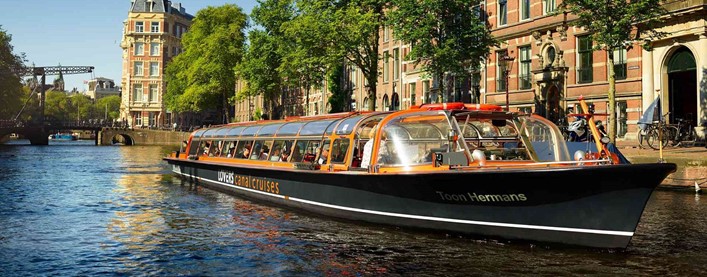
Everything you need to know about the Amsterdam canals
6 April 2021
The Dutch capital is known for her waterways but why does Amsterdam have canals? How many canals are there in Amsterdam and what is their combined length? Here is some of the most important information you need to know about one of the city's main attractions before your visit to Amsterdam.
History
Though the area of the Netherlands now known as Amsterdam was first settled over 4600 years ago, it wasn’t until late 12th or early 13th century that the dam after which the city is named was built in the Amstel river. After the city was given town privileges in the 13th century, it also gained the right to put up defences including moats. These first defensive moats are the origins of the Amsterdam canals.
As the city grew, the defensive moats became part of the city and new moats were dug, increasing the number of canals in the city. The city’s grandest canals were created in the 17th century. As trade grew exponentially during the Dutch Golden Age, the county’s capital needed to grow too. This lead to the creation of the Herengracht, Keizersgracht, Prinsengracht and Singel.
Canal belt
The Amsterdam canal belt is a system of streets, quays, bridges, and buildings on fairly identical plots of equal length with enclosed courtyards around the four grand canals, which run parallel to each other from the Brouwersgracht to the Amstel river.
The canal belt was named a UNESCO World Heritage Site on 1 August 2010, which made it the ninth UNESCO site in the Netherlands. The canal belt made the list because it met three criteria to do so. It represents a masterpiece of human creative genius, it exhibits an important interchange of human values, and it is an outstanding example of a type of building, architectural or technological ensemble which illustrates significant stages in human history.
Fun facts
These days there are over 160 canals in Amsterdam with a length of over 100 kilometres, or 60 miles. The city is home to over 1900 bridges, which combined with the waterways have given the city the nickname ‘Venice of the north’. The canals separate the city into 90 different islands and give room to around 3000 houseboats.
Today the water in the Amsterdam canals is cleaner than ever, especially as they were once used as garbage dumps. Every year the city removes between 12,000 and 15,000 bikes from the water and the cleaner water has resulted in several different kind of aquatic life settling in the city, including 20 different kinds of fish and crabs.

